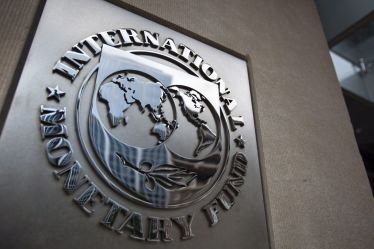By Patrick Corby
The International Monetary Fund (IMF) has reduced the UK’s growth forecast for 2013 from 0.8% to 0.2% in its latest release, representing a fastening contraction in the British economy.
The UK’s own Office for Budget Responsibility (OBR) has forecast growth to 0.6% this year and 1.8% in 2014, as opposed to the IMF’s forecast of 1.4% next year, down from 2%. The UK’s downgrade is the sharpest seen in the developed economies.
The report specifically targeted George Osborne for “playing with fire” regarding the size of the cuts he made to the budget last month. The IMF report suggested further monetary easing which would temporarily inflate the UK’s credit bubble and allow the contraction to occur more slowly.
The IMF report states that “the recovery is progressing slowly, notably in the context of weak external demand and ongoing fiscal consolidation” and that a “domestic rebalancing from the public to the private sector is being held back by deleveraging, tight credit conditions, and economic uncertainty”.
The fund would like to see more inflationary measures used to increase credit availability and spur growth in a time when most economies are focused on trimming and contracting their economies from their debt-fuelled levels reached in 2007.
The Bank of England recently published its inflation report which saw inflation increase towards 2.8% and markets now expect a rise towards 3% as the currency devalues its purchasing power and increases its international competitiveness. This is normally seen as the warning area where controlled inflation can give way to more rapid price movements.
This is in context to the wider picture of world economic output. The IMF now expects a decline in total European output of -0.3%, 1.9% growth in the US and India to 6.1%, Brazil to 2.5% and to 8% in China. Only Japan and Sub-Saharan Africa saw increases.
You can learn more than this and how economics can be applied to current affairs in our archive here or the Upcoming’s Archive here.
If you like our approach, you can subscribe to our free news letter at the top right of this page. The Logic Tank newsletter shows and teaches you how to apply economics to current affairs in a series of three articles a week.




